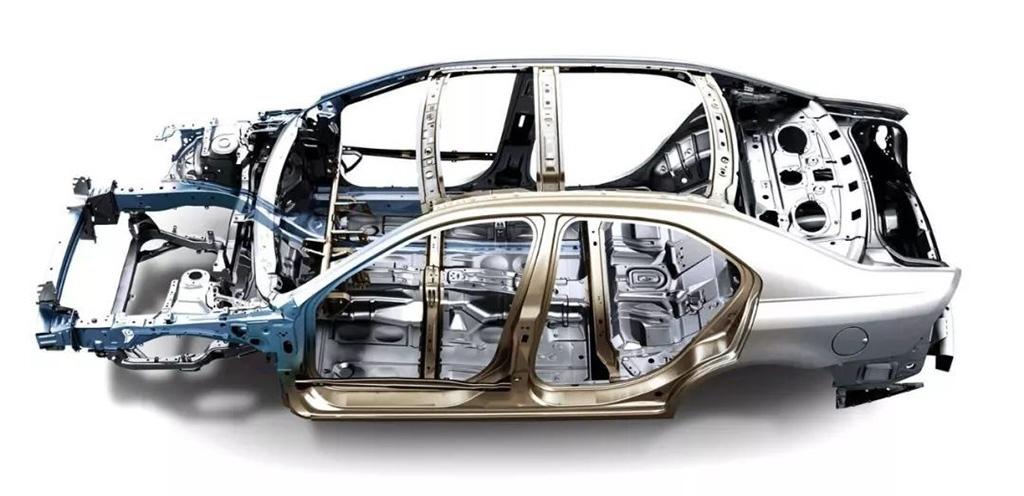[WapCar] According to the force of the body, it can be divided into two types: load-bearing body and non-bearing body.
Load-bearing Body
The load-bearing vehicle body does not have a frame. The vehicle body serves as the mounting base for each assembly of the engine and the chassis. The vehicle body also functions as a frame and bears all loads.

The structure in which chassis components (engine, suspension, etc.) are directly mounted on the body, is mainly composed of thin plates. In order to alleviate the stress on the mounting parts of the chassis and ensure the rigidity of the body, some vehicles will be equipped with subframes. One end of the chassis is installed on the sub-frame, and it is also installed on the body of the car.

Advantages
1. Light weight, good overall bending and torsion rigidity;
2. The center of gravity is low, the floor of the vehicle compartment is low, and the vehicle height is small;
3. Mainly for thin plate processing, and spot welding can be used, which is easy for mass production.
Disadvantages
1. Noise and vibration from road surface and engine are easily transmitted into the body;
2. Because the entire body is used to ensure rigidity, it is difficult to modify.
The picture below is a semi-finished product of a load-bearing body. You can see that the body shell, roof and floor, as well as the three pillars A, B, and C, are all connected together. In the stamping stage, the steel plate is first stamped into different shapes, and then welded into a complete body. These components can be roughly divided into two types according to their functions: body panels and structural parts.

The so-called cover is the part that covers the surface of the car body. Basically, the parts we see from the outside of the car belong to the cover, such as car doors, roofs, fenders, etc., which usually play a role in beauty and shelter from wind and rain. Generally, they are stamped from steel plates with a thickness of no more than 1 mm.
The thickness of steel plate of a certain car usually refers to these parts. In fact, these parts have very limited influence on the strength of the body, so we can no longer judge the crash safety of a car from the thickness of the body cover. Of course, thicker steel plates are still stronger in resisting mild scratches.